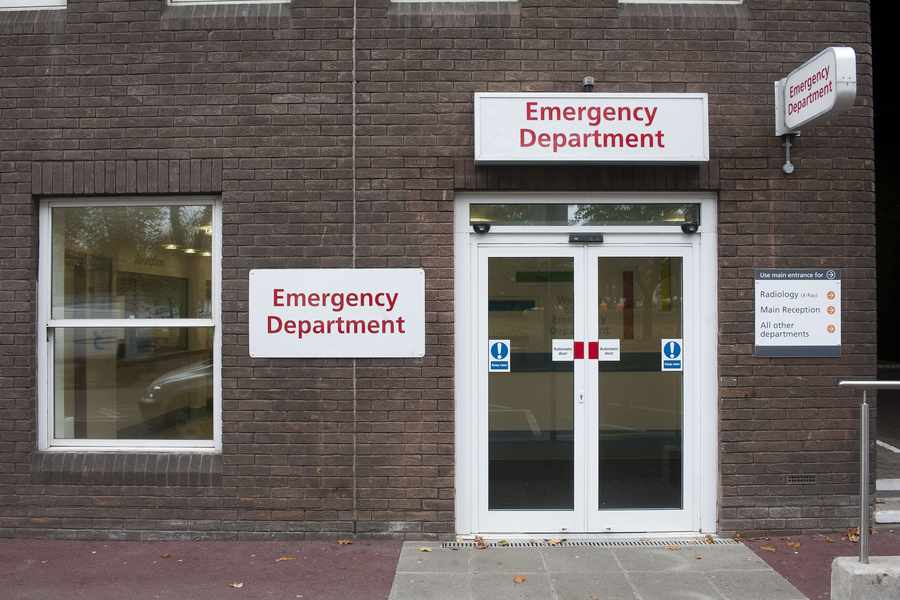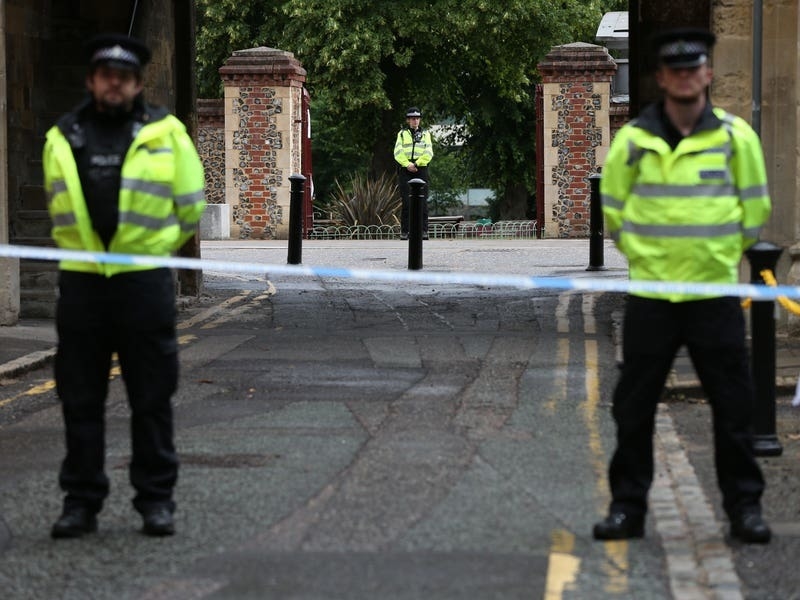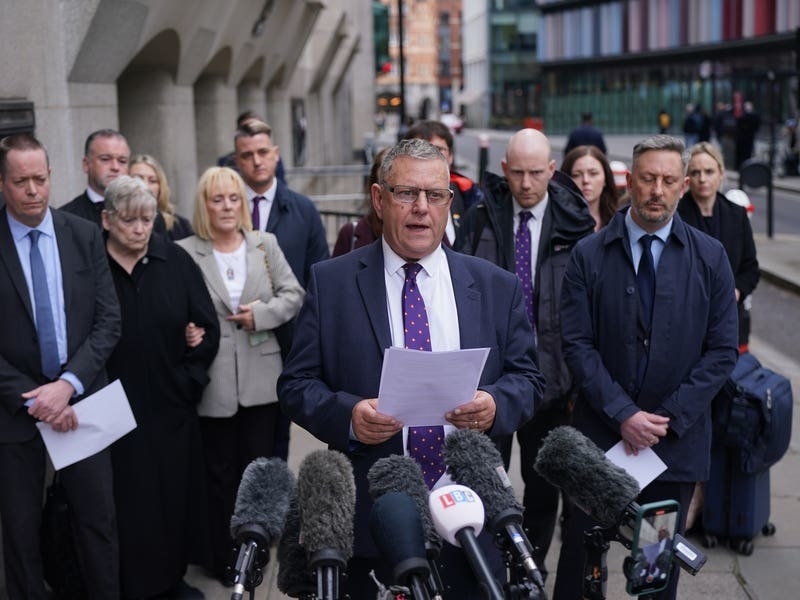Figures released following a request by this paper show that patients waiting between six and 12 hours in the department has risen steadily since 2012.
The Hospital today said that no patient waits in the department for more than 12 hours and that 100 per cent of patients were seen and assessed in less than four hours.
It added that although some patients waited up to 12 hours for a ward bed or for an ambulance to take them home, the majority were ‘deliberately held’ in the department for their ‘clinical safety’ or for treatment.
Drunk patients, patients requiring emergency surgery and those waiting to be referred to another service such as a mental health facility were given as examples why people may spend long periods in the unit.
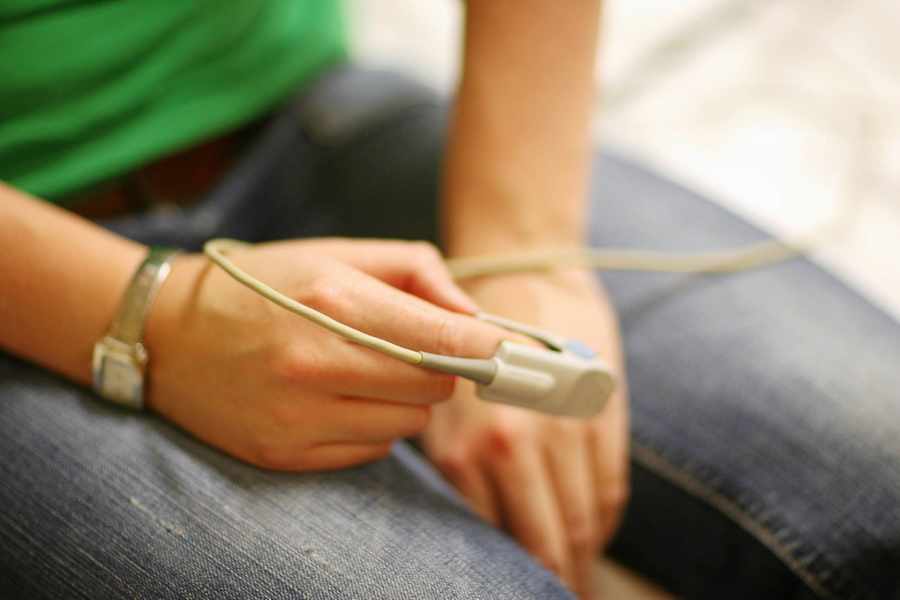
If a patient has to wait longer than six hours for admission or for an ambulance this is automatically recorded as an incident. In 2014, there were 68 such reports.
In 2014, 1,415 patients waited in A&E between six and 12 hours.
This compares to 692 in 2013 and 508 in 2012.
These figures include the people that attended the department but did not wait to be seen by a medic.
Meanwhile, the figures also show that the number of admissions to the unit were lower in 2014 compared to 2012. These were 36,756 and 36,813 respectively.
There were 35,920 admissions in 2013.
In 2014, 96.2 per cent of patients were seen, treated and discharged from the department in less than six hours. This compares to 98.6% in 2012 and 98.1% in 2013.
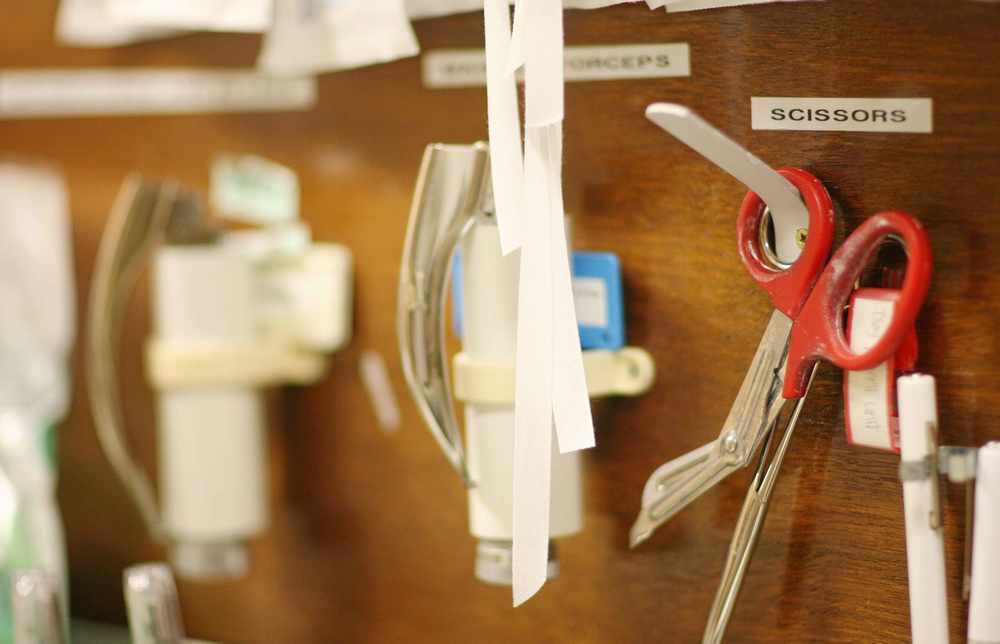
A breakdown of the figures show that August last year had the highest number of patients waiting up to 12 hours with 192 waiting – compared to 52 and 49 in 2012 and 2013 respectively.
The Hospital said that one reason for the longer waiting times was because in the last 12 months it has changed how it manages certain patient groups – such as those suffering from suspected deep vein thrombosis and asthma – so Islanders can be assessed, receive diagnostic tests and be given appropriate treatment within A&E rather than being admitted.
It says this policy has made a ‘significant impact’ on the number of admissions and is helping it to manage its limited bed policy.
The Hospital also said that the inaccurate entry of a patient’s discharge time due to staff being busy with other patients, may falsely extend the officially recorded time in the unit.
Hospital managing director Helen O’Shea said: ‘With the exception of the 68 patients who were waiting for a ward bed or an ambulance home, the remaining patients were deliberately held in the emergency department for their clinical safety or for treatment prior to discharge rather than being admitted.
‘We are however in no way complacent and we are continually striving to streamline all processes in order to reduce waiting times for patients.’
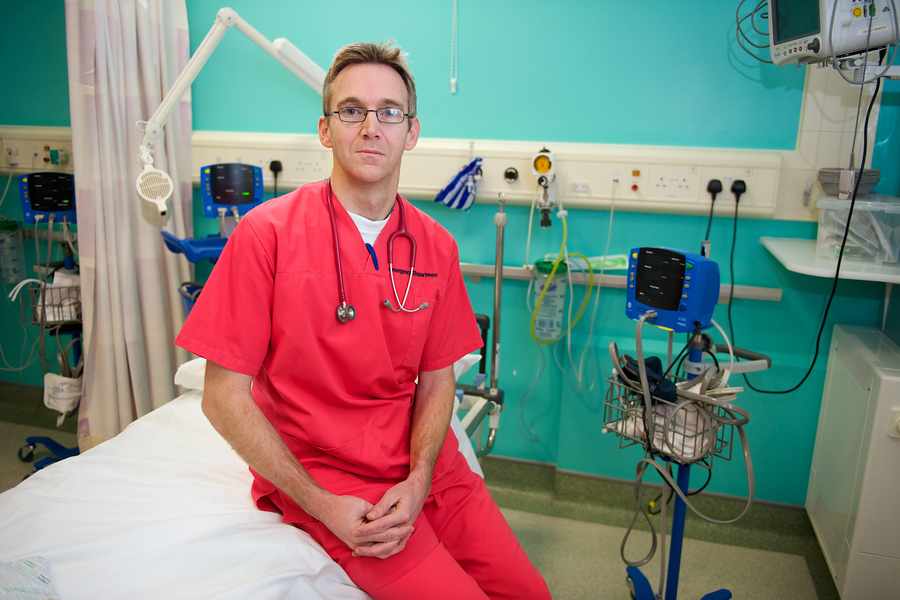
Dr Simon Chapman, who is clinical director of emergency medicine at the Hospital, says that road accidents are often the most concerning incidents that the department deals with.
AS the head of a trauma team at the annual Formula One Grand Prix at Silverstone, Dr Chapman knows all about the dangers drivers face when they get behind the wheel.
But it is the type of injuries he has seen suffered by road accident victims in Jersey – particularly those who were not wearing a seatbelt – that causes him the most concern.
Dr Chapman said that wearing a seatbelt significantly increased a driver’s chances of surviving a crash.
‘If you are not wearing one, you run a significant risk of having a head, neck and chest injury.’
At Silverstone last year, Finnish racing driver Kimi Raikkonen survived a crash where, because of the speed he was travelling, the pressure on his body was 47 times the force of gravity on impact.

Dr Chapman said: ‘His Ferrari was significantly damaged by the force of the impact and the speed, but we were able to discharge him later the same day because of the technology that goes into the cars.
‘But if you do not wear a seatbelt even at 40 miles per hour your body is going to go straight into the car, so you will suffer trauma to a significant extent.
‘The design of the car, air bags and seatbelts are designed to protect you.’
Dr Chapman, who helped set up a regional major trauma centre at Southmead Hospital in Bristol before moving to Jersey two years ago, said Islanders who suffer brain injuries in road accidents may never make a full recovery.
As part of his job, he leads a team of specialists which cares for the worst affected victims of major accidents, known as the trauma team.
The trauma team, which is only assembled in the event of a serious incident, is made up of an anaesthetist, an accident and emergency doctor, two emergency nurses, an orthopaedic doctor and a consultant in emergency medicine.
Support staff for the team includes a surgical middle-grade doctor, a radiologist for CT scans, radiographers for X-rays and intensive care nurses. Dr Chapman said: ‘We have not seen many major crashes in the last year but we are available 24 hours a day, on every day of the year.
We get called out if there is a significant compromise to the airways, if there is a head or pelvic injury, or if the patient’s consciousness level has been affected.’
Dr Chapman explained that, when an accident has happened, the ambulance crew in attendance will contact the Hospital from the scene and give staff a rundown of the patient’s injuries and state of consciousness.
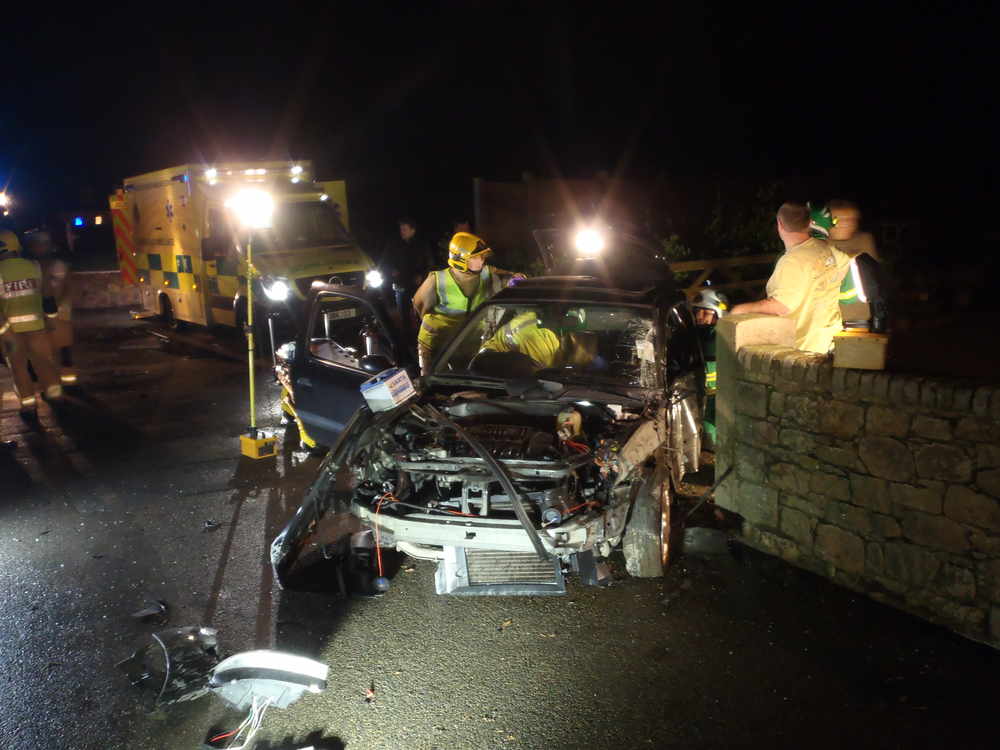
‘When the call comes in I activate the trauma team and wherever they are on the Island they will come to the Hospital and we will be ready and waiting in the resuscitation room when the patient arrives,’ he explained.
Once the casualty has arrived, the trauma team then immediately gets to work on initial life-saving interventions.
Dr Chapman said: ‘Once we are happy we have stabilised them from an initial life threatening position, the casualty has a CT scan to enable us to better identify injuries and judge whether they should be transferred.’
Any patient with significant head or pelvic injuries is airlifted by an air ambulance to Southampton General Hospital, the nearest regional trauma centre to the Island, and will be accompanied by a team of medical staff.
However, if there is a major incident within the Island such as a multi-vehicle accident or plane crash, there are preparations in place at the Hospital to look after multiple victims at one time.
Dr Chapman said: ‘We have the ability to declare a major incident wherever we feel our resources are going to be overstretched by an incident.
‘We could have 30 patients arriving at one time, and we have to be able to manage them. There are many clinicians within the departments, as well as accident and emergency consultants and surgeons, who can be called in if a major incident is declared.
‘We are demographically very far away from the nearest regional trauma centre but we have a lot of expertise here in the Island.’
He explained that it was not up to the trauma team to make a judgment on who was at fault in the accident, but he said in many cases that the driver had been either speeding or not concentrating.
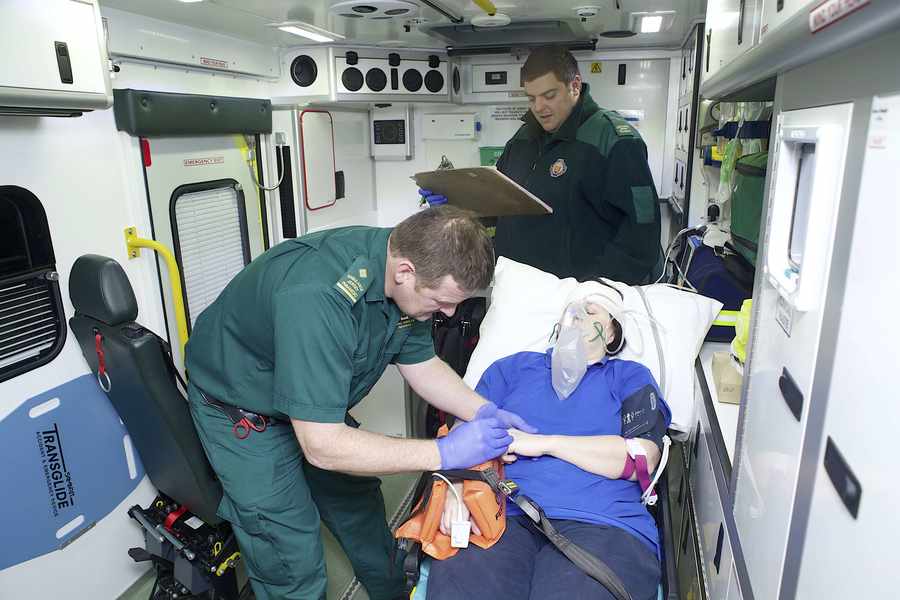
JERSEY’S Ambulance Service is failing to get to many emergencies within the UK benchmark target of eight minutes because of the pressures of a growing volume of calls, according to the operations director.
Paramedics use a UK standard under which crews aim to get to 75 per cent of the highest priority incidents within eight minutes of receiving a call.
However, in 2013 this was achieved in only one month of the year, and last year the service did not meet the target in any month up to December.
In 2013, out of the 1,649 high priority category ‘A’ calls the service responded to, crews met the eight-minute benchmark 1,103 times (66.9 per cent).
The lowest figure for that year was in January, when paramedics hit the target in just over half (53.4 per cent) of calls.
Up until 11 December last year, ambulance crews responded to 1,700 category ‘A’ calls – 1,170 of them within eight minutes (68.8 per cent) – representing a rise of two per cent on the year before.
Mike Judge, the service’s operations director, said that the problems have arisen because the number of calls has increased over the years, but the organisation still has the same number of frontline staff as it had in 1999. Meanwhile, a number of managers who have retired have not been replaced.

He said: ‘We have a trimmer management team. We are at the stage where we can’t afford to lose any more management.
‘Within this management group we are all trained operational paramedics as well, which is an advantage.’
He said that medical emergencies which come under category ‘A’ include a patient experiencing chest pain, difficulty breathing, a stroke, asthma attack, major haemorrhaging and road accidents.

